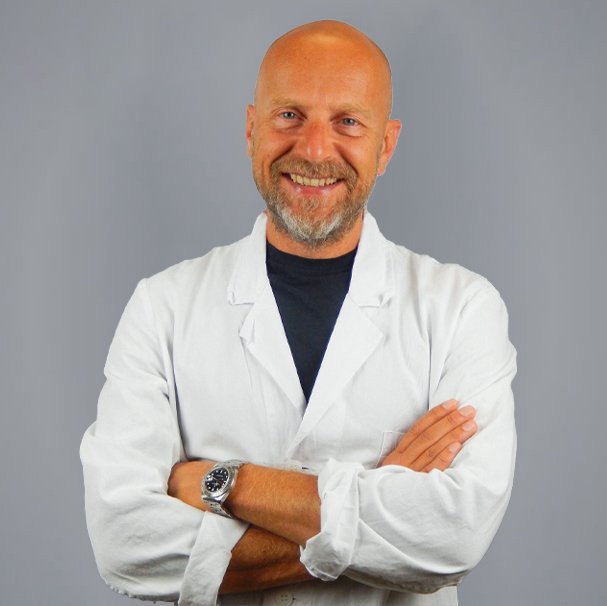Oral cavity tumors: how they manifest themselves and how they are treated

Publication date: 11-12-2023
Updated on: 15-01-2024
Topic: Dentistry, Oncology
Estimated reading time: 1 min
Article Author
Eleonora Orioli
Medical Editor
Alessandro Baj
Editor and Translator
Viktoryia LuhakovaOral cavity cancer is one of the most frequent cancers of the head and neck area along with those involving pharynx, larynx, salivary glands, nasal cavities and paranasal sinuses. In Italy, about 4,000 cases of oral cancer are diagnosed each year. Professor Alessandro Baj, Head of the Maxillofacial Surgery Department at Ospedale Galeazzi-Sant'Ambrogio explains the causes of its occurrence, the process of diagnosis and its treatment.
Oral cavity tumors: what are they?
The oral cavity is the region that includes the anterior ⅔ of the tongue, gums, inner mucosa of the cheeks and lips, the area located under the tongue (the oral floor or pelvis), the maxillary (upper) and mandibular (lower) bone component.
"The tumors that develop in these districts in most cases:
- have malignant behavior;
- originate from the uncontrolled proliferation of cells due to genetic damage," Professor Baj explains.
The frequency of these malignancies is higher in men: the average incidence is 7 cases per 100.000 population (8 per 100.000 in males and 5 per 100.000 in females).
"This type of neoplasm is very rare in young individuals; the probability of occurrence seems to increase with age and peaks around 70."
Risk factors of oral neoplasia
The main risk factors are:
- cigarette smoking;
- consumption of alcohol.
"Coexistence of these 2 factors multiplies the risk of developing neoplasms of the mouth," specifies Professor.
Cancers of the oral cavity can also originate from repeated trauma to the inner surface of the mouth, such as, for example, from improper placement of dentures. Poor oral hygiene and tobacco chewing also contribute to increased risk.
"For lip cancer, possible favorable factors are:
- exposure to sunlight;
- use of the pipe.
There is a small proportion (<5%) of oral carcinomas related to chronic Papilloma Virus (HPV) infection, a virus with high oncogenic power," the specialist continues.
Finally, a good percentage (between 15% and 40%) of mouth carcinomas arise from conditions known as precancerous lesions:
- leukoplakia;
- erythroplakia;
- lichen.
Symptoms of oral cavity tumors
The signs of oral cavity tumors vary according to the site and size of the neoformation: "Most often, there is the appearance of an ulcerated, flat, exophytic or nodular area, whitish or reddened, painful, with a tendency to bleed, which does not heal spontaneously within 15 days," describes Prof. Baj.
The main symptoms are:
- difficulty chewing;
- bleeding in the mouth;
- loss of teeth;
- difficulty applying dentures;
- presence of ulcers that may bleed;
- pain and difficulty swallowing;
- difficulty speaking;
- ear pain;
- altered sensitivity of the lower lip and chin;
- loss of appetite and weight.
In some cases, the tumor may manifest as a laterocervical lymph node tumefaction, nonpainful, hard to palpation, poorly mobile on the underlying planes, without skin signs, as an expression of regional metastasis.
The role of early diagnosis and testing
Oral cancer, if diagnosed at an early stage, can be successfully treated.
"The diagnostic delay depends mainly on underestimation of symptoms, often due to insufficient knowledge of these neoplasms that are confused with infectious-inflammatory pictures (abscesses) or benign neoplasms," Prof. Baj adds.
To make a diagnosis, it is essential to perform a thorough history collection and a thorough objective examination of the head and neck.
"Often it is the dentist who is the first to intercept the patient and send him or her to the specialist for the finding of suspicious lesions worthy of further investigation. However, biopsy of the lesion represents the pivotal procedure for the diagnosis. It is often performed on an outpatient basis under local anesthesia and involves taking a small fragment of macroscopically suspicious material that will then be analyzed and studied by the anatomic pathologist under a microscope."
Diagnostic completion then requires:
- radiological examinations aimed at the study of soft tissue (Magnetic Resonance Imaging - MRI);
- radiological examinations aimed at the study of bone tissue (Computed Tomography - CT);
- examination of the upper digestive tract by fibroscopy.
Treatment: surgical and clinical approach
Based on the pre-surgery clinical staging, site, type, loco-regional extent, and tissues involved, the case is discussed in a multidisciplinary setting with oncologists, radiologists, radiation oncologists, anatomic pathologists, and anesthesiologists in order to propose the best treatment option to the patient.
The treatment of first choice, when possible, is surgical excision. In many cases it is possible to combine, in a single surgical time, radical tumor removal, possible laterocervical lymph node emptying, and a reconstruction of the district with locally or remotely harvested flaps (microvascular free flaps).
Based on the final histological examination, treatment may be complemented by adjuvant medical therapies such as radiotherapy and/or chemotherapy.
Treatments of oral cavity neoplasms at Ospedale Galeazzi-Sant'Ambrogio
"Our Maxillofacial Surgery Department specializes in the treatment of malignant and benign neoplasms of the craniofacial district, especially tumors of the oral cavity. By acquiring and processing CT and MRI images, we have the ability to virtually simulate surgery (computer-assisted surgery), and then faithfully reproduce the same in the operating room," explains Prof. Baj.
These technologies, in experienced hands, make it possible to significantly reduce surgical time and intra- and postoperative complications, ensuring the best possible outcome both functionally and cosmetically, with the goal of providing the patient with a quality of life as similar as possible to the preoperative one.
The approach is always and strictly multidisciplinary through collaboration with various specialists (oncologist, radiation oncologist, anatomic pathologist, radiologist, dietician, dentist, and anesthesiologist) in order to provide individualized treatment.